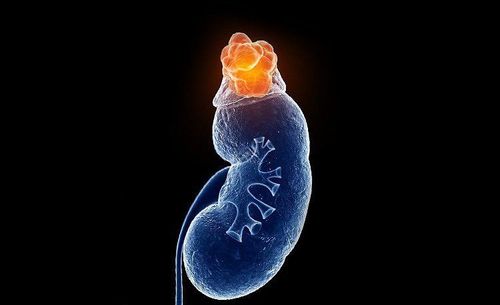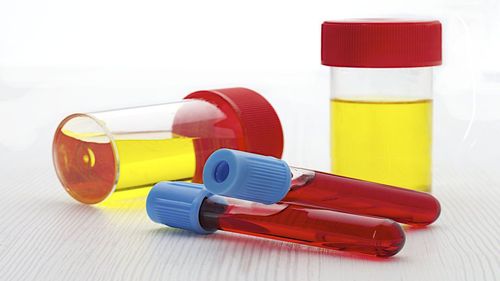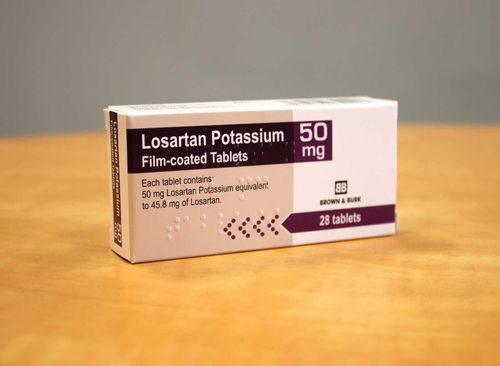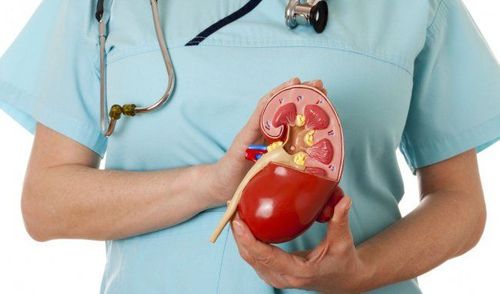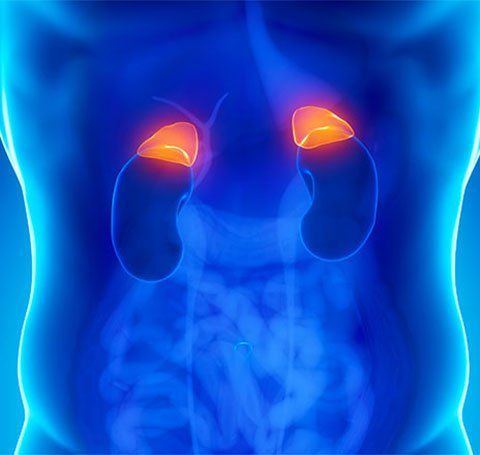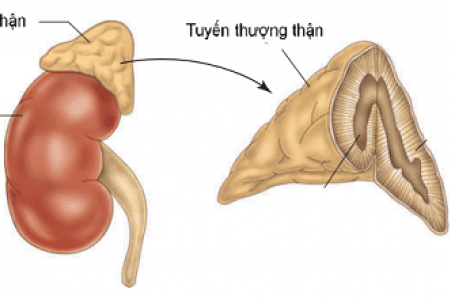This is an automatically translated article.
The role of the adrenal glands is to release certain hormones directly into the bloodstream, many of these hormones are involved in how the body responds to stress and some are vital to survival. of body. Both parts of the adrenal gland (adrenal cortex and adrenal medulla) perform separate functions.
1. Adrenal gland
The adrenal glands are endocrine glands that produce a variety of hormones including adrenaline and the steroids aldosterone and cortisol. They are located on top of each kidney. Each gland has an outer sheath that produces steroid hormones and an inner marrow. The adrenal cortex itself is divided into three regions: coronal glomerulosa, fasciculata, and reticularis. The adrenal cortex produces three main steroid hormones: Mineralocorticoids, glucocorticoids, and androgens.The production of steroid hormones is called steroidogenesis and is involved in a number of reactions and processes taking place in cortical cells. The marrow produces neurotransmitters like epinephrine and dopamine that function to create rapid responses throughout the body in stressful situations.
The adrenal glands are controlled by the pituitary gland - another part of the endocrine system. Abnormal signals can disrupt the amount of hormones produced by the pituitary gland to the adrenal glands. This can cause them to produce too much or too little hormone. Hormonal imbalances can cause a wide range of symptoms and health problems.
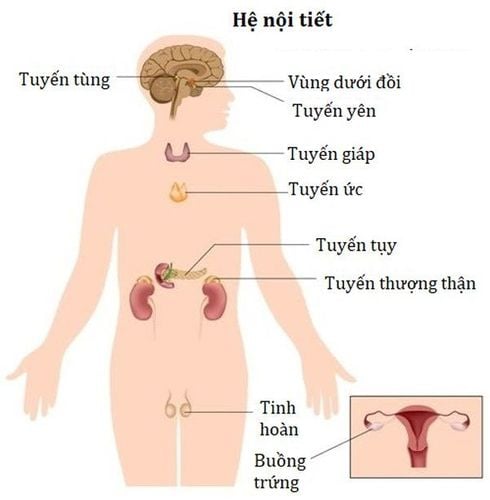
Hệ thống nội tiết con người
2. The role of the adrenal gland in the endocrine system
The adrenal glands secrete a number of different hormones that are metabolized by enzymes either in the gland or in other parts of the body. These hormones are involved in several essential biological functions.
2.1. Corticosteroids Corticosteroids are a group of steroid hormones produced from the cortex of the adrenal glands. Corticosteroids are named for each of their functions.
Mineralocorticoids (such as aldosterone) - produced in the glomerulosa rim and work to help regulate blood pressure and electrolyte balance by managing the balance of potassium and sodium in the body. The adrenal glands produce aldosterone, a mineral that is important for the regulation of salt balance and blood volume. In the kidney, aldosterone acts on the peripheral complex tubules to increase sodium reabsorption and the excretion of both potassium and hydrogen ions. Aldosterone is responsible for the reabsorption of about 2% of the glomerular filtration rate. Sodium retention is also a response of the peripheral colon and sweat glands to aldosterone receptor stimulation. Aldosterone II and extracellular potassium are the two major regulators of aldosterone production. The amount of sodium present in the body affects the extracellular volume, which in turn affects blood pressure. Therefore, the effect of aldosterone on sodium retention is important for blood pressure regulation.
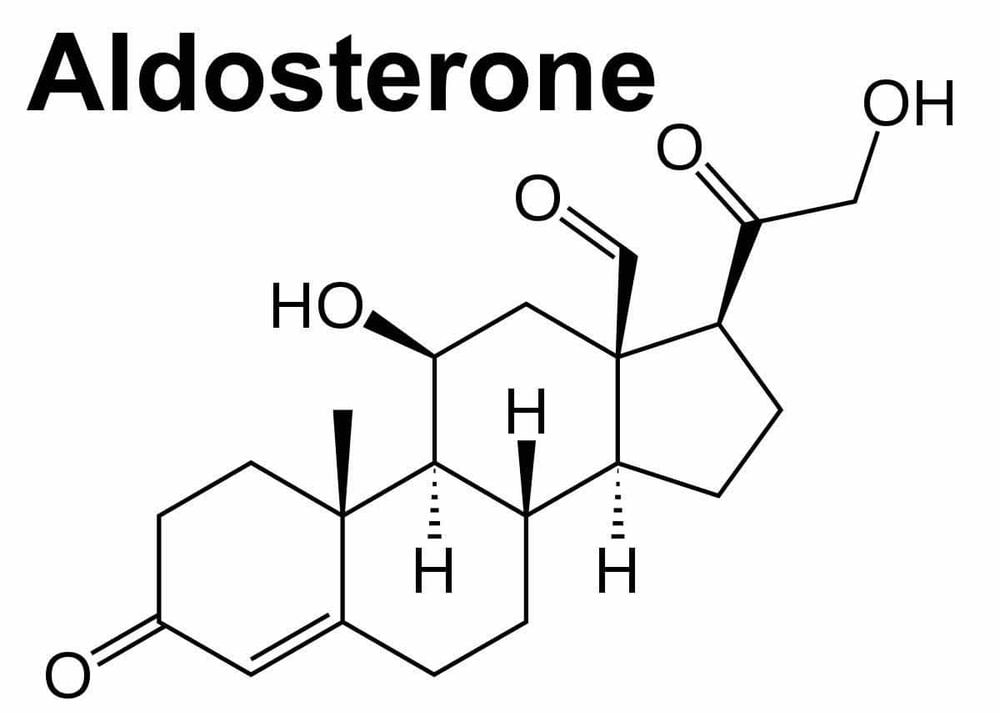
Cấu trúc aldosterone
Glucocorticoids have many effects on metabolism. They increase the level of circulating glucose. This is the result of increased mobilization of amino acids from proteins and stimulation of glucose synthesis from these amino acids in the liver. In addition, they increase levels of free fatty acids that cells can use as a substitute for glucose for energy. Glucocorticoids also have effects related to blood sugar regulation, including suppression of the immune system and anti-inflammatory effects. Cortisol reduces the ability of osteoblasts to create new bone tissue and reduces calcium absorption in the gastrointestinal tract. The adrenal glands secrete a basal level of cortisol but may also produce hormones in response to adrenocorticotropic hormone (ACTH) from the anterior pituitary. Cortisol is released unevenly, its blood concentration being highest in the early morning and lowest in the evening due to the circadian rhythm of adrenocortical secretion (ACTH). Cortisol is the inactive product of the 11β-HSD enzyme on cortisol. The reaction catalyzed by 11 β-HSD is reversible, and that means it can turn cortisone into the biological hormone cortisol. Glucocorticoids cortisol and cortisone are synthesized in the coronal fasciculata. Their functions include regulation of metabolism and suppression of immune system activity.
Glucocorticoids are regulated by the hypothalamic-pituitary-adrenal (HPA) axis. The synthesis of glucocorticoids is stimulated by adrenocorticotropic hormone (ACTH) - a hormone released into the bloodstream by the anterior pituitary gland. In turn, the production of ACTH is stimulated by the presence of corticotropin hormone (CRH)-released by neurons of the hypothalamus. ACTH acts on adrenal cells first by increasing the level of StART in the cells, and then all steroid P450 enzymes. The secretion of glucocorticoids is mainly regulated by the renin-angiotensin-aldosterone system (RAAS). Potassium levels are at a lower level than ACTH levels. Sensors of blood pressure in the kidneys release the enzyme renin into the bloodstream and initiate a series of reactions that lead to the formation of angiotensin II. Angiotensin receptors in the cells of the glomerulosa wall recognize this substance and, upon binding, stimulate the release of aldosterone.
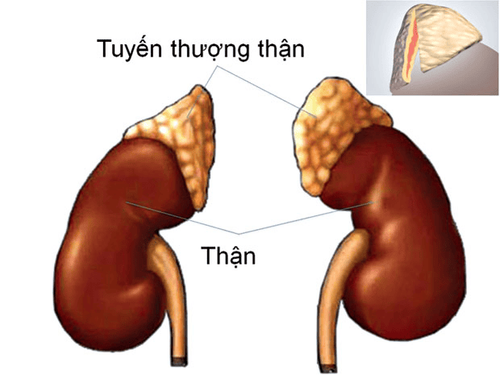
Vị trí tuyến thượng thận
2.2. Neurotransmitters The main neurotransmitters are epinephrine and norepinephrine, adrenaline and noradrenaline. The adrenal glands are responsible for most of the adrenaline circulating in the body, but only a small amount of noradrenaline circulates. These hormones are released by the adrenal medulla, which contains a dense network of blood vessels.
Adrenaline and noradrenaline act at adrenoreceptors throughout the body, with effects including increased blood pressure and heart rate. In addition, it is responsible for the fight response characterized by rapid breathing and heart rate, increased blood pressure, and constriction of blood vessels in many parts of the body.
2.3. Androgens Androgens are produced by the innermost layer of the cerebral cortex, and the coronal reticularis. Production of androgens that are converted to fully functional sex hormones in the gonads and other target organs.
3. Diseases related to the adrenal gland
An underactive or underactive adrenal gland may be due to the adrenal gland itself or the root cause may be a defect in another gland.
Addison's disease: This is a rare disorder that can affect anyone and at any age. It develops when the adrenal cortex does not produce enough cortisol and aldosterone. Adrenal cancer: It is an invasive cancer, but it is very rare. Adrenal gland tumors tend to spread to other organs and cause adverse changes in the body due to the excess of hormones they produce. Cushing's syndrome: An uncommon condition and the opposite of Addison's disease. It is caused by an overproduction of the hormone cortisol. There are many causes of this disorder. A tumor in the adrenal gland or pituitary gland may also be the cause. Congenital adrenal hyperplasia: This genetic disorder is characterized by low levels of cortisol. It's common for people with congenital adrenal hyperplasia to have additional hormone problems such as low aldosterone levels (which maintain the balance of salt and water).

Tăng sản thượng thận bẩm sinh
The adrenal glands have a multifunctional role in the endocrine system. The two very different parts of this gland, the medulla and the cortex, both regulate and maintain many processes from metabolism to response.
To register for examination and treatment at Vinmec International General Hospital, you can contact Vinmec Health System nationwide, or register online HERE
Reference sources: webmd.com, hopkinsmedicine .org, healthline.com
Recommended video:
Routine health check at Vinmec: Protect yourself before it's too late!
SEE MORE
Signs and treatment of congenital adrenal hyperplasia Causes and symptoms of chronic adrenal insufficiency How 5mm kidney stones are treated?




